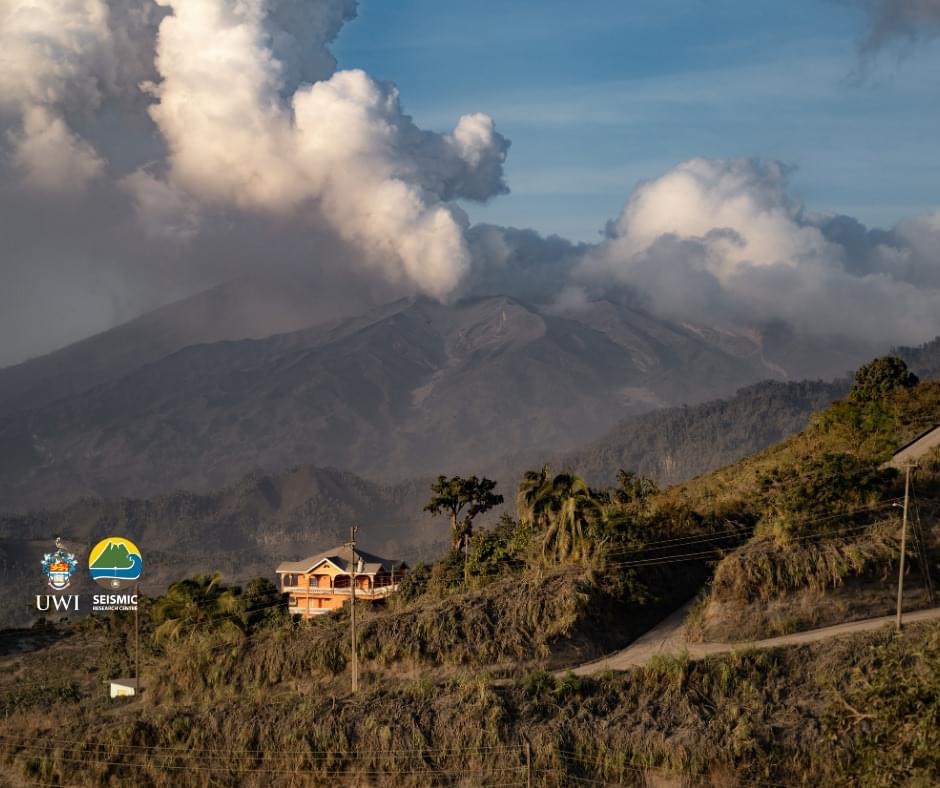The information posted below was gathered by the UWI Seismic Research Centre.
Seismic activity changed with the explosive activity at 6:30 am on 13 April.
Prior to the explosion, long-period (LP) earthquakes had been increasing in number.
Categorised as a Vulcanian explosion, it was accompanied by larger seismic tremor which was followed by over three hours of smaller continuous seismic tremor.
A Vulcanian explosion are small to moderate explosive eruptions, lasting seconds to minutes.
Ash columns can be up to 20 km in height and pyroclastic density currents (PDCs) can be generated.
The explosions pulsed for ~30 minutes and produced PDCs that reached the sea at the mouth of the Wallibou approximately 6 km from the volcano.
Once this tremor had died down, LP earthquakes were recorded, again slowly growing in numbers. but are significantly smaller than those prior to the 6:30 am explosion.
Eyewitness account of this flow indicated that it had extended further into the sea when it reached the coastline.
Observations made this afternoon from the coastline indicate that PDCs resulting from this morning and have reached the sea in every valley extending from Larikai to Wallibou.
The volcano continues to erupt explosively and has now begun to generate pyroclastic density currents.
Explosions and accompanying ashfall, of similar or larger magnitude, are likely to
continue to occur over the next few days.


COMMENTS